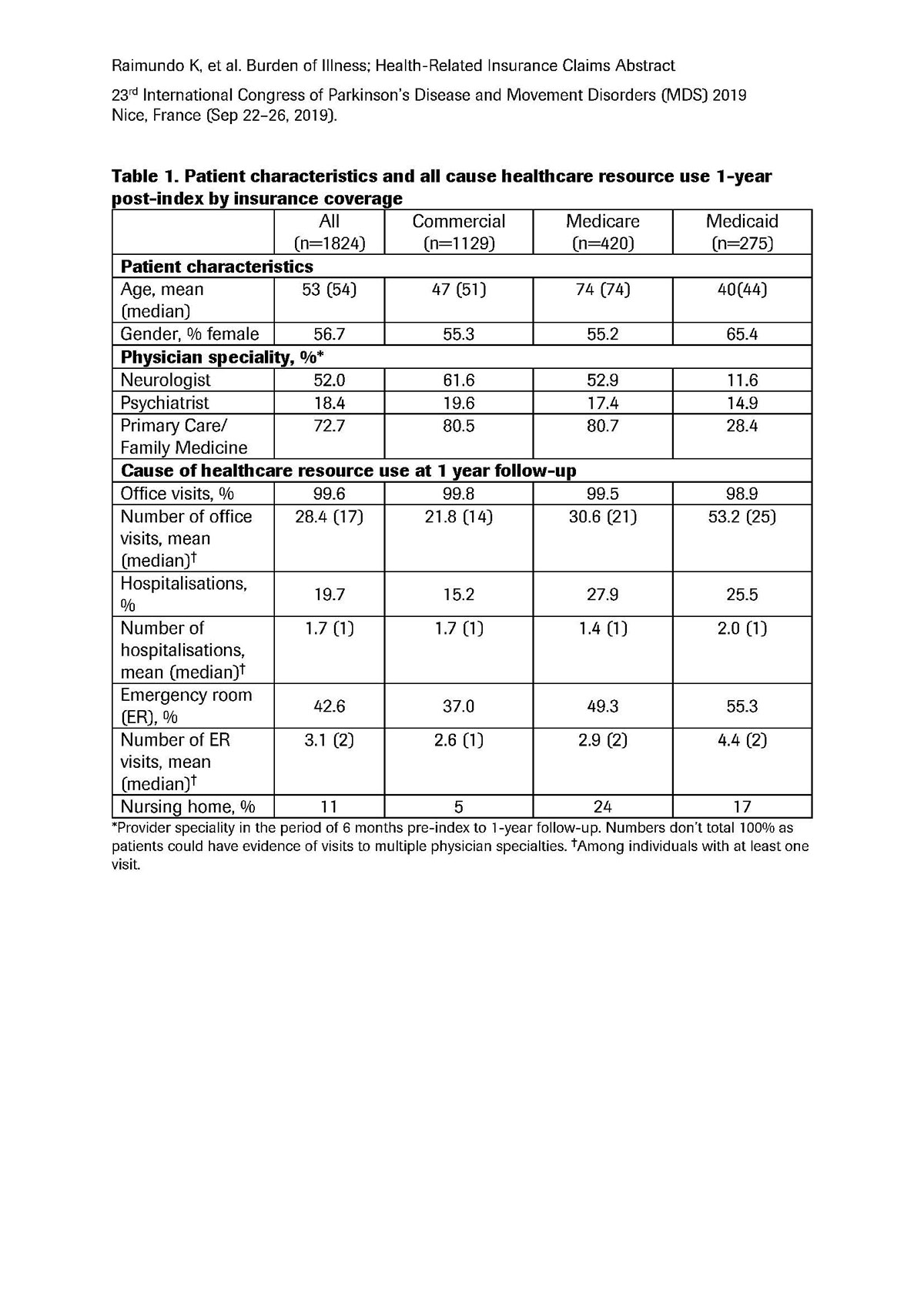Session Information
Date: Monday, September 23, 2019
Session Title: Huntington’s Disease
Session Time: 1:45pm-3:15pm
Location: Agora 3 West, Level 3
Objective: To describe the healthcare resource utilization (HRU) in Huntington’s disease (HD) in private (commercial) and public (Medicare and Medicaid) insurance plans in the US.
Background: HD is a genetic, neurodegenerative and ultimately fatal disease that affects about 37,000 people in the US. Little is known about the overall burden of HD to the US healthcare system.
Method: We performed a retrospective analysis of Marketscan Commercial, Medicare Supplement & Medicaid insurance database 2010–2016. We included individuals with 1 or more claims for HD (ICD-9: 333.4/ ICD-10: G10). Individuals were required to have at least 6 months of enrolment prior to the first evidence of HD (index date), and 12 months of enrolment following index without switching health insurance (1-year follow-up period). Disability was defined as access to Medicare before the age of 65. All-cause HRU included office visits, hospitalisations, emergency room (ER) visits and nursing home use. Here, we describe patient characteristics at index and patterns of HRU during the 1-year follow-up period.
Results: We identified 1,824 individuals. The mean age was 53 and 56.7% were female. Disability was evident in 9.3% of Medicare patients. Most patients had evidence of a visit to a primary care physician (72.7%), followed by neurologist (52%). The prevalence of neurologist visits was higher for those with commercial insurance (61.6%) or Medicare (52.9%) compared with those with Medicaid (11.6%). During the follow-up period, most patients had evidence of one or more office visits (99.6%), while fewer had evidence of hospitalisation (19.7%) and ER visits (42.6%). Among patients with at least one HRU visit, there were on average 28.4 office visits, 1.7 hospitalisations, and 3.1 ER visits. Eleven percent of patients had evidence of being admitted to a nursing home. Compared with patients insured with a commercial plan, those with public insurance had numerically higher rates of HRU and nursing home use, which was likely due to higher disease severity among patients eligible for public health insurance [Table 1].
Conclusion: HD is burdensome to individuals and society. Many people with HD are of working age yet exhibit evidence of disability. In our study, all-cause HRU was high in this HD population, and higher for those covered by Medicare or Medicaid, likely due to severe disease as evidenced by the rate of nursing home use.
To cite this abstract in AMA style:
K. Raimundo, J. Luo, R. Tan, T. To, R. Fuller, J. Warner. Burden of Huntington’s disease in the US: Analysis of an insured population [abstract]. Mov Disord. 2019; 34 (suppl 2). https://www.mdsabstracts.org/abstract/burden-of-huntingtons-disease-in-the-us-analysis-of-an-insured-population/. Accessed March 31, 2025.« Back to 2019 International Congress
MDS Abstracts - https://www.mdsabstracts.org/abstract/burden-of-huntingtons-disease-in-the-us-analysis-of-an-insured-population/

